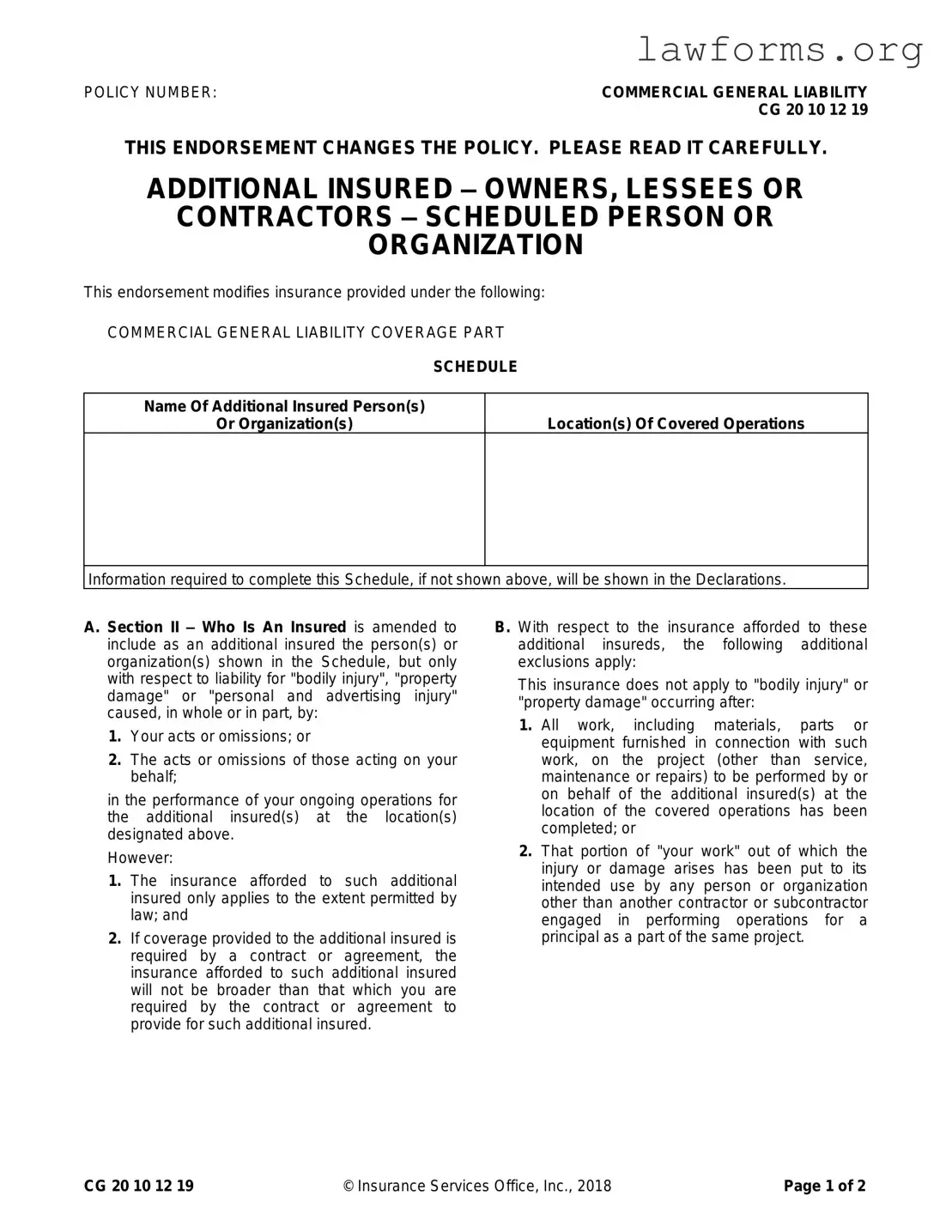Fill Out a Valid Cg 20 10 07 04 Liability Endorsement Template
The CG 20 10 07 04 Liability Endorsement form is a crucial document that modifies the insurance coverage provided under a Commercial General Liability policy. It extends coverage to additional insured parties, such as owners, lessees, or contractors, for specific liabilities arising from the policyholder's operations. Understanding this endorsement is essential for ensuring proper coverage and compliance with contractual obligations.
To fill out the form, please click the button below.
Customize Document Online

